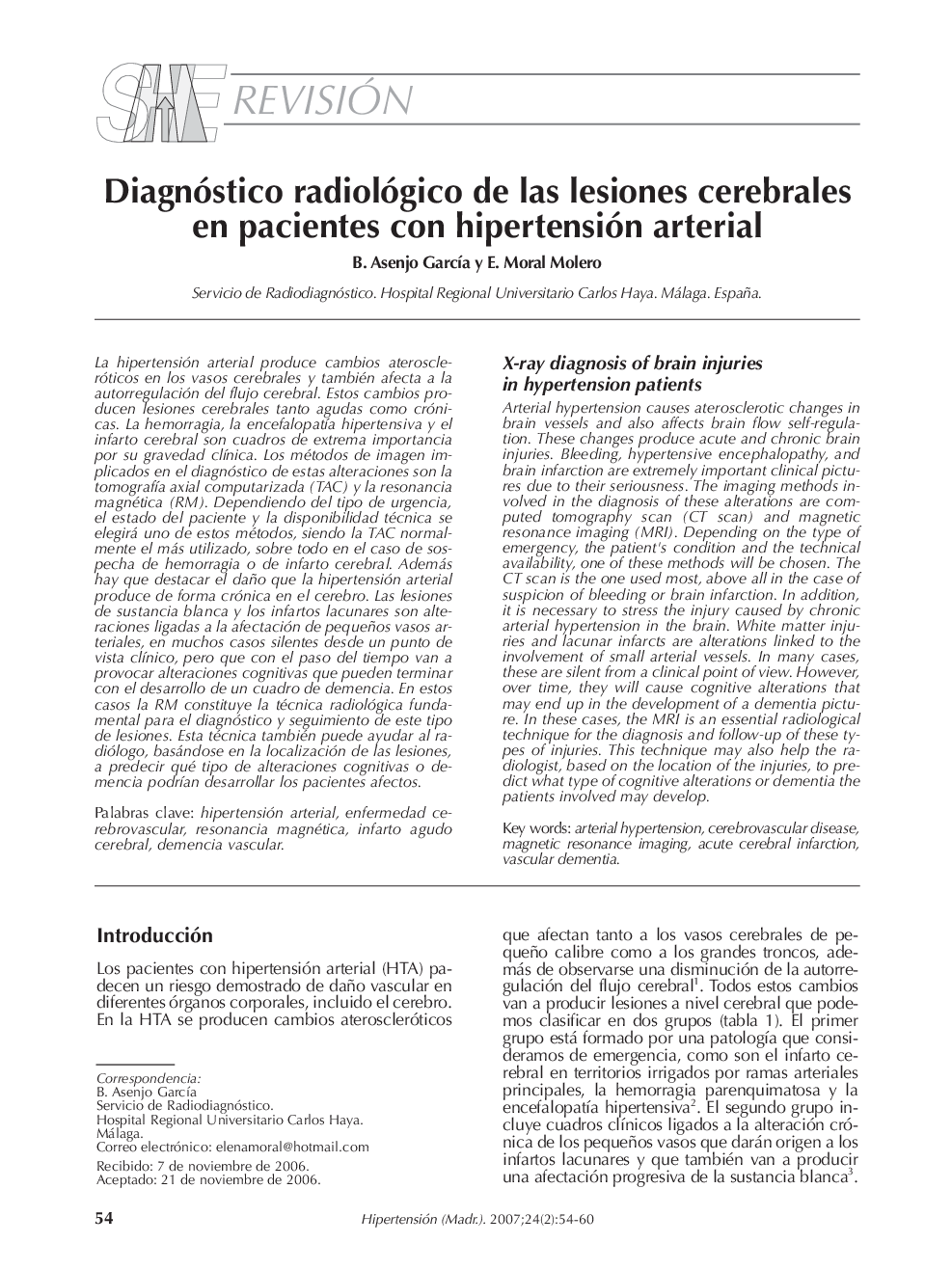| Article ID | Journal | Published Year | Pages | File Type |
|---|---|---|---|---|
| 2926109 | Hipertensión | 2007 | 7 Pages |
Abstract
Arterial hypertension causes aterosclerotic changes in brain vessels and also affects brain flow self-regulation. These changes produce acute and chronic brain injuries. Bleeding, hypertensive encephalopathy, and brain infarction are extremely important clinical pictures due to their seriousness. The imaging methods involved in the diagnosis of these alterations are computed tomography scan (CT scan) and magnetic resonance imaging (MRI). Depending on the type of emergency, the patient's condition and the technical availability, one of these methods will be chosen. The CT scan is the one used most, above all in the case of suspicion of bleeding or brain infarction. In addition, it is necessary to stress the injury caused by chronic arterial hypertension in the brain. White matter injuries and lacunar infarcts are alterations linked to the involvement of small arterial vessels. In many cases, these are silent from a clinical point of view. However, over time, they will cause cognitive alterations that may end up in the development of a dementia picture. In these cases, the MRI is an essential radiological technique for the diagnosis and follow-up of these types of injuries. This technique may also help the radiologist, based on the location of the injuries, to predict what type of cognitive alterations or dementia the patients involved may develop.
Keywords
Related Topics
Health Sciences
Medicine and Dentistry
Cardiology and Cardiovascular Medicine
Authors
B. Asenjo GarcÃa, E. Moral Molero,
